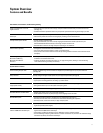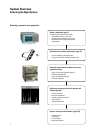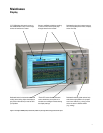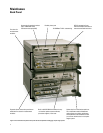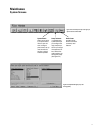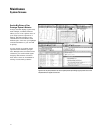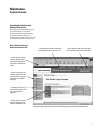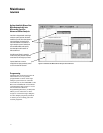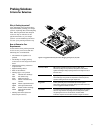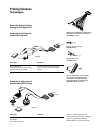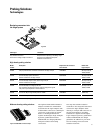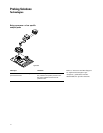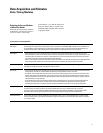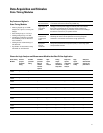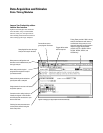
13
Probing Solutions
Criteria for Selection
Why is Probing Important?
Your debugging tools perform three
important tasks: probing your target
system, acquiring data, and analyzing
data. Data acquisition and analysis
tools are only as effective as the
physical interface to your target
system. Use the following criteria to
see how your probing measures up.
How to Determine Your
Requirements
To determine what probing method
is best to use you need to take the
following into consideration:
• The number of signals to be
probed
• The ability to design probing
connectors on the target PC board
itself
• Mechanical probing clearance
requirements
• Signal loading effects
• Ease of attachment
• Package type to be probed
DIP Dual In-line Package
PGA Pin Grid Array
BGA Ball Grid Array
PLCC Plastic Leaded Chip
Carrier
PQFP Plastic Quad Flat Pack
TQFP Thin Quad Flat Pack
SOP Small Outline Package
TSOP Thin Small Outline
Package
• Package Pin Pitch (distance
between pin centers)
Immunity to Noise EMF noise is everywhere and can corrupt your data. Active
attenuator probing can be particularly susceptible to noise effects.
Agilent Technologies designs probing solutions with high immunity to
transient noise.
Impedance High input impedance will minimize the effect of probing on your
circuit. Although many probes are acceptable for lower frequencies,
capacitive loading dominates at higher frequencies.
Ruggedness A flimsy probe will give you unintended open circuits. Agilent
Technologies' probes are mechanically designed to relieve strain and
ensure a rugged and reliable connection.
Connectivity A multitude of device packages exist in the digital electronics industry.
Check our large selection of probing solutions designed for specific
chip packages or buses. As an alternative, we offer reliable
termination adapters that work with standard on-target connectors.
Figure 3.1. A rugged connection lets you focus on debugging your target, not your probe.



